This Hamachi Crudo recipe is the perfect way to impress your dinner guests. It features thin slices of tender hamachi layered with radishes, microgreens, Thai chili peppers, and cilantro, then topped with a simple, savory dressing made with citrus and soy.
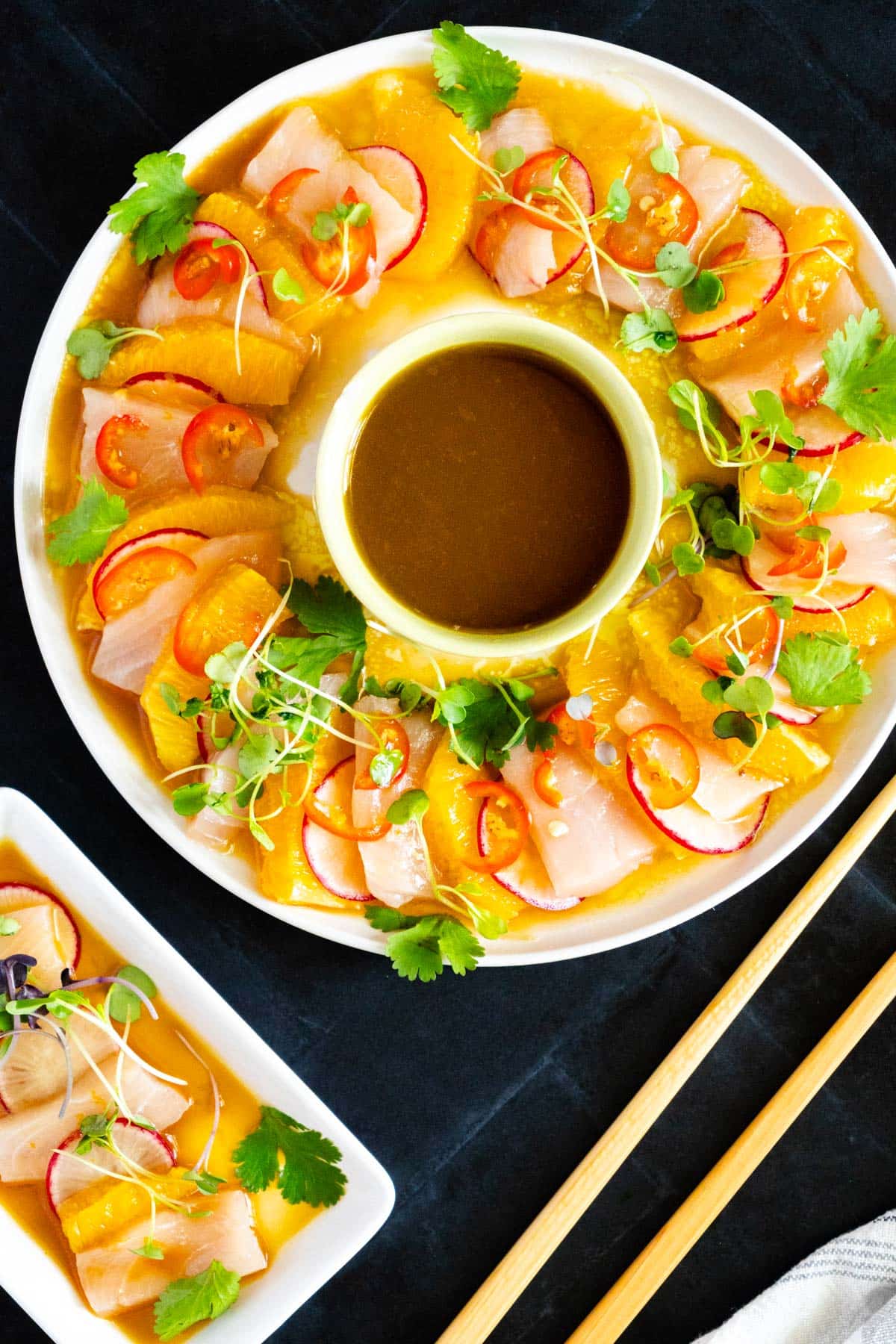
This post may include affiliate links. Please read my disclosure policy.
The best kinds of recipes are the ones that look impressive but are actually surprisingly simple to make. This Hamachi Crudo is definitely one of those recipes.
You can make it as a starter to a seafood dinner featuring tropical roasted salmon, or pair it with my crispy salt and pepper shrimp and miso roasted eggplant.
This recipe is made with tons of bright, fresh, flavorful ingredients that are beautifully arranged on a serving platter to create an elegant and delicious appetizer. And there's no cooking involved!
Jump to:
What is Hamachi Crudo?
First off, hamachi is farm-raised Japanese yellowtail. A lovely fish with a buttery texture. Crudo means raw. When we put these together we get raw hamachi. Just like a carpaccio dish, hamachi crudo is served with a light dressing, typically citrus juice based, and a variety of toppings and herbs.
Crudo vs Sashimi
Both crudo and sashimi are made with thin slices of raw fish. However, crudo is more about accenting the raw fish with garnishes and seasonings. Sashimi, on the other hand, is much more fish-centric. Rather than being served with any garnishes or toppings, sashimi typically served plain with a side of soy sauce for dipping.
📖Why This Recipe Works
Many hamachi crudo recipes use white or red onions, but I prefer to use radishes instead. By using radishes in place of onion you still get that lovely sharp flavor, but it is less intense so it doesn't overwhelm the delicate fish.
As with all of my recipes, I prefer to use simple and easy-to-find ingredients. Rather than using the traditional yuzu juice or homemade ponzu sauce, this recipe maintains many of those traditional flavors but uses more accessible ingredients including tangerine.
The lovely sweet orange flavor is less acidic than lemon juice or lime juice and easier to access than yuzu.
This recipe is ready in just 15 minutes but looks (and tastes) like you got it at any of the fanciest sushi restaurants.
🧾Ingredient Notes
Hamachi Yellowtail - Sushi-grade fish is key since we're serving it raw. The best substitute for hamachi is Japanese Amberjack.
Radishes - You can use regular radishes or watermelon radishes. Either way, make sure they are thinly sliced so they layer well with the other ingredients.
Microgreens - Microgreens are a great way to add some extra color and flavor. I typically use a rainbow mix or arugula greens. You can also increase the amount of cilantro and pair with parsley.
Cilantro - Adds a bright freshness to the dish.
Tangerines - If you can't find tangerines, swap them out for fresh mandarin oranges or another smaller orange.
Tamari Soy Sauce- I use Tamari soy sauce because maintain a gluten-free diet but standard soy sauce works just fine.
Mirin - Mirin is a rice wine that adds a sweet flavor to the fish. If you can't find mirin, you can swap it out for a dry sherry, dry white wine, or even rice vinegar.
Oil - We're using a combination of olive oil and sesame oil for the perfect nutty flavor. You can add a few sesame seeds if you like.
Thai Chili - Thinly sliced Thai chili adds the perfect amount of heat to the appetizer. You can also use jalapeño or serrano peppers. If you don't like spice, simply leave them out.
See the recipe card for exact quantities.
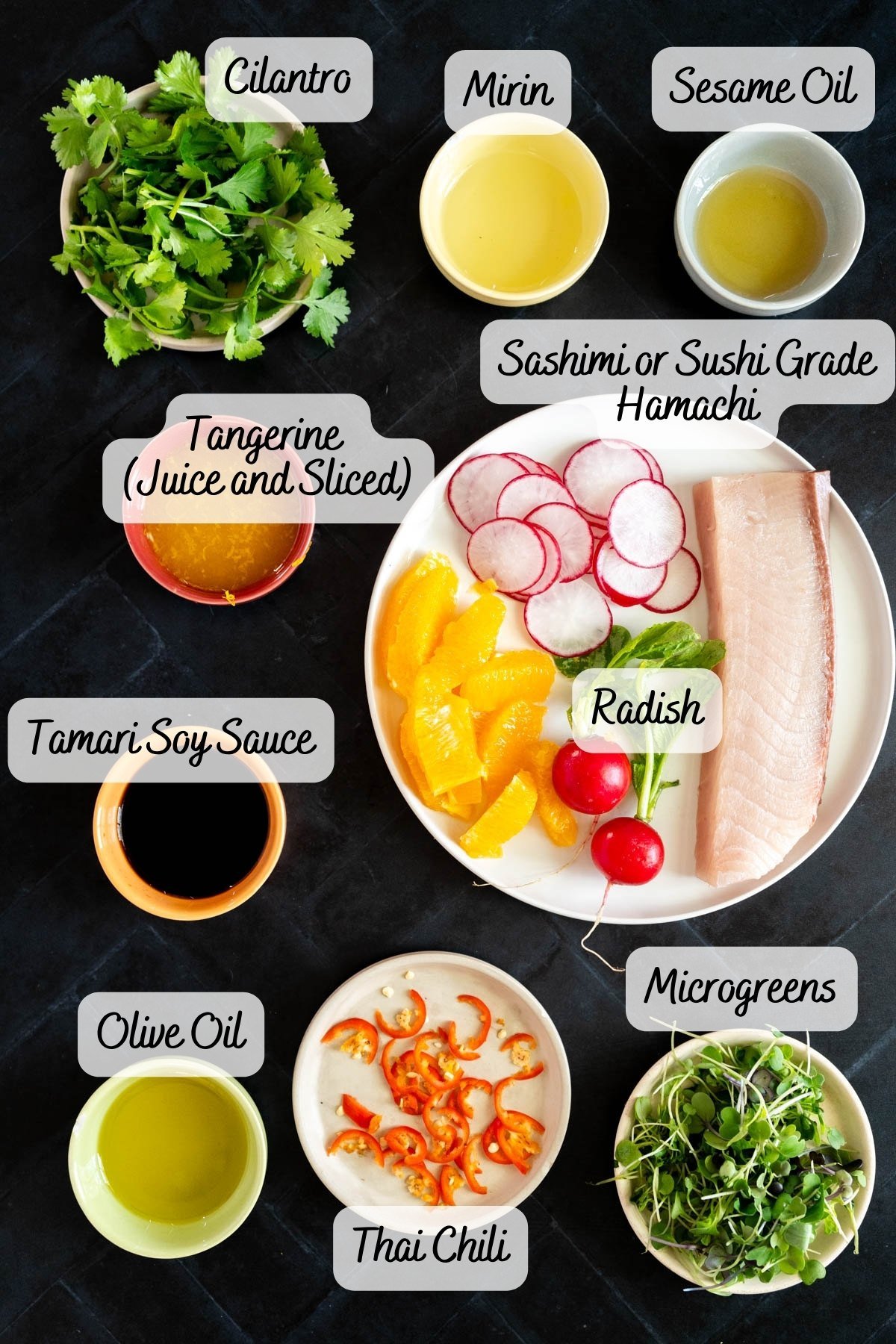
💭 Where to Buy Hamachi
You can find hamachi yellowtail fish in the seafood section of most grocery stores. Feel free to start here or check out your local Asian grocery stores. Personally, I buy all my raw fish at a local Japanese market that specializes in this type of fish.
Wherever you are purchasing your fish, be sure to let the fishmonger know that you plan to eat it raw. You should only be using sushi-grade sashimi. While sashimi-grade fish is not standardized talking with the person a the fish counter.
Don't be afraid of buying flash-frozen fish. This is a good thing as it kills any parasites while maintaining freshness.
⏲️How to Make Hamachi Crudo
Since this yellowtail crudo recipe doesn't involve any cooking, it comes together so quickly and easily. Just 15 minutes from start to finish!
Step 1- Prep the Veggies
For the tangerine, you will need to cut down the sides of the peel to remove it. Then use your knife to cut out individual segments. Juice the other tangerine and set aside for the sauce.
Thinly slice your radishes and your chili.
Step 2- Make the Crudo Sauce
In a bowl, combine the tangerine zest and juice, tamari or soy sauce, mirin, olive oil, and sesame oil. Mix well until fully combined.
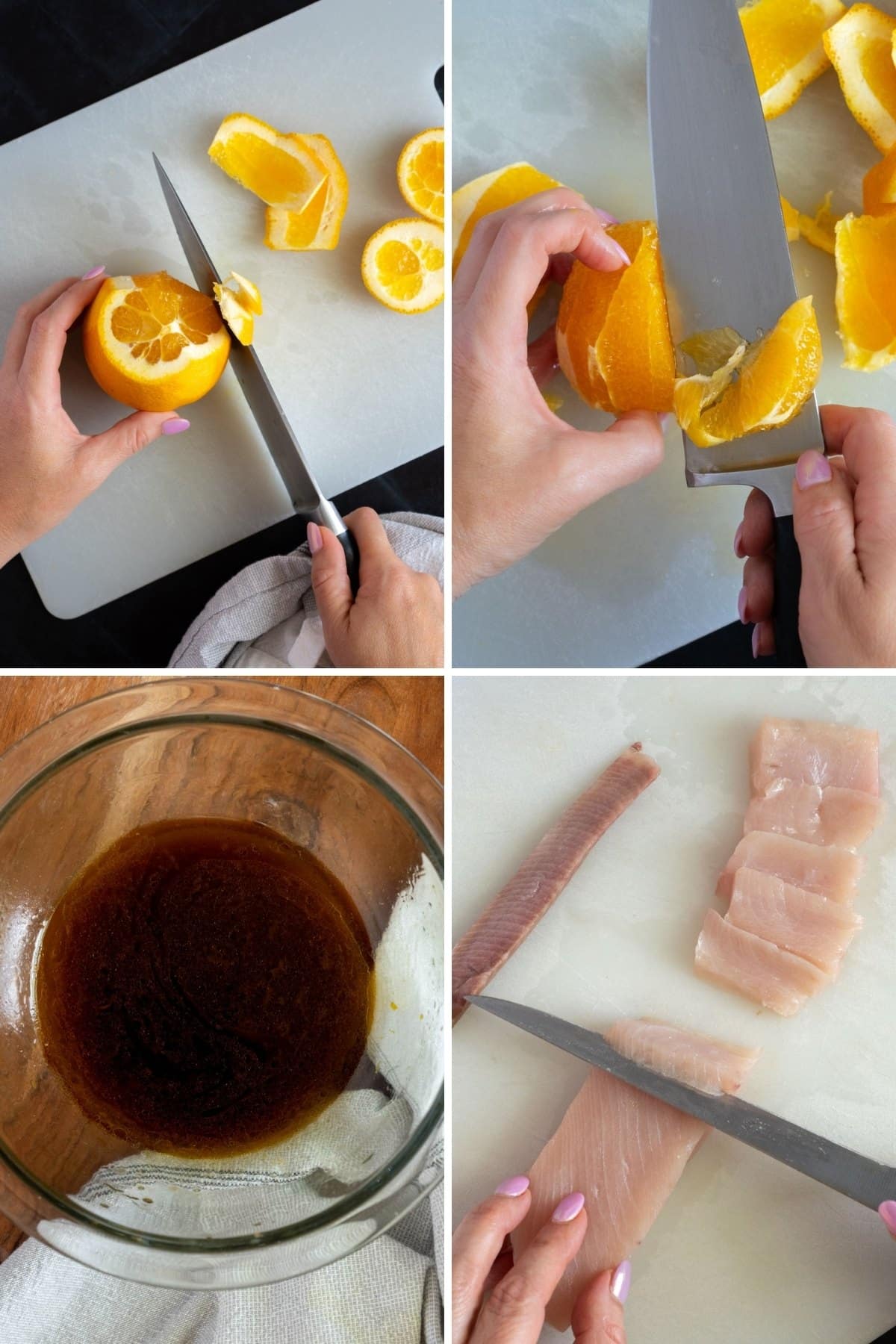
Step 3- Thinly Slice the Hamachi
Start by placing the hamachi yellowtail into the freezer. It only needs about 5-10 minutes, but the cooler temperature makes it so much easier to cut into thin slices. You can save time and pop the fish into the freezer while you whip up your dressing!
Once it's nice and chilled, use a sharp knife and a plastic cutting board to slice the fish into thin pieces. I cut off the dark edge for presentation purposes only but this isn't necessary.
Step 4- Assemble and Serve
On a serving plate, arrange the sliced hamachi in whatever pattern you like. Add on the sliced radishes, orange segments, and pepper, then drizzle the crudo sauce on top. Alternatively, drizzle half the sauce on top and save the rest for a dipping sauce on the side.
Lastly, top the platter with the microgreens and cilantro, then serve immediately.
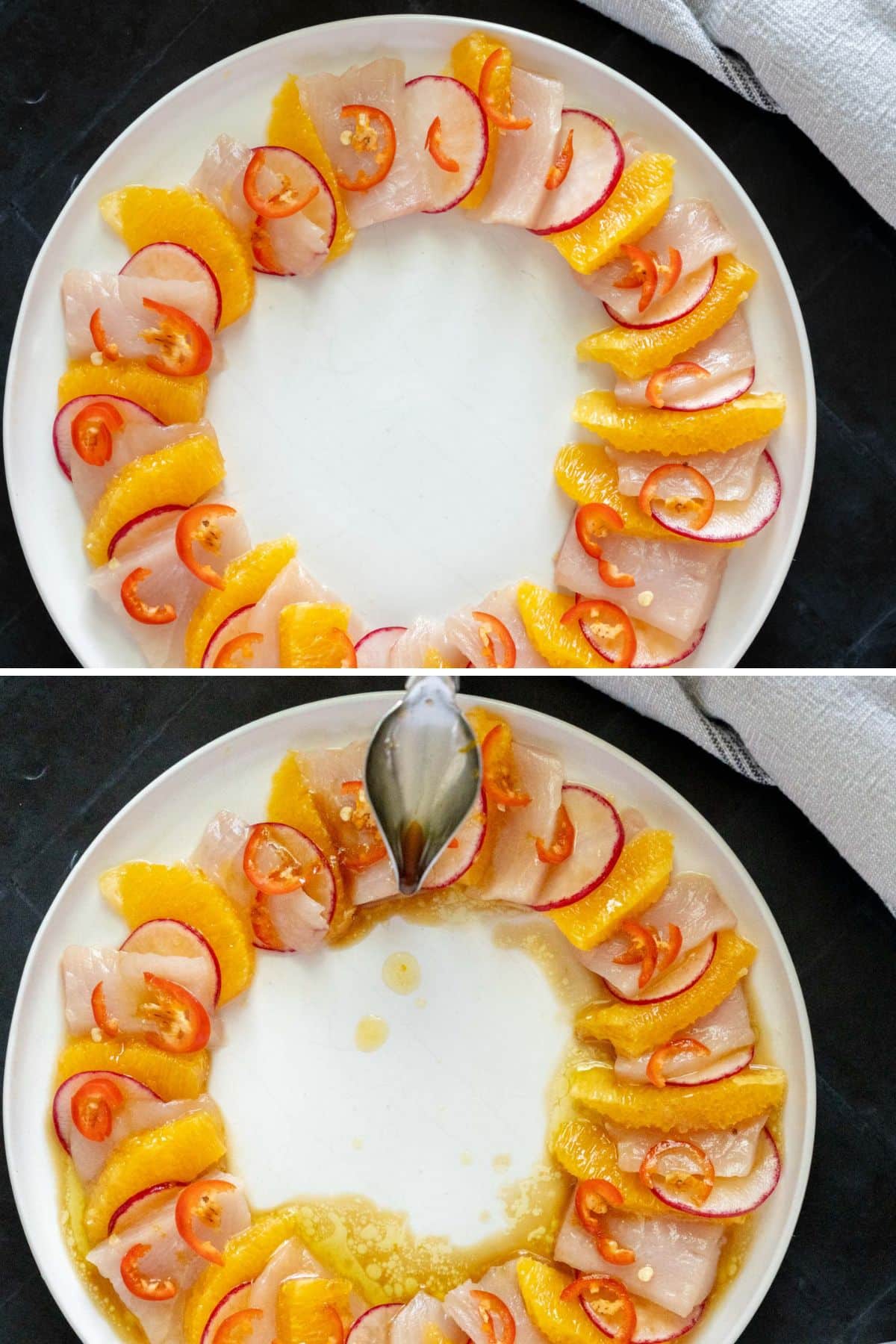
🥗What to Serve with Crudo
This hamachi recipe makes an excellent appetizer all on its own. However, you can definitely make it into more of a meal by serving it over sushi rice or by pairing it with another tasty recipe! Here are a few ideas:
👩🏻🍳 Expert Tip
Plan for 1 to 2 ounces of fish per person when making crudo
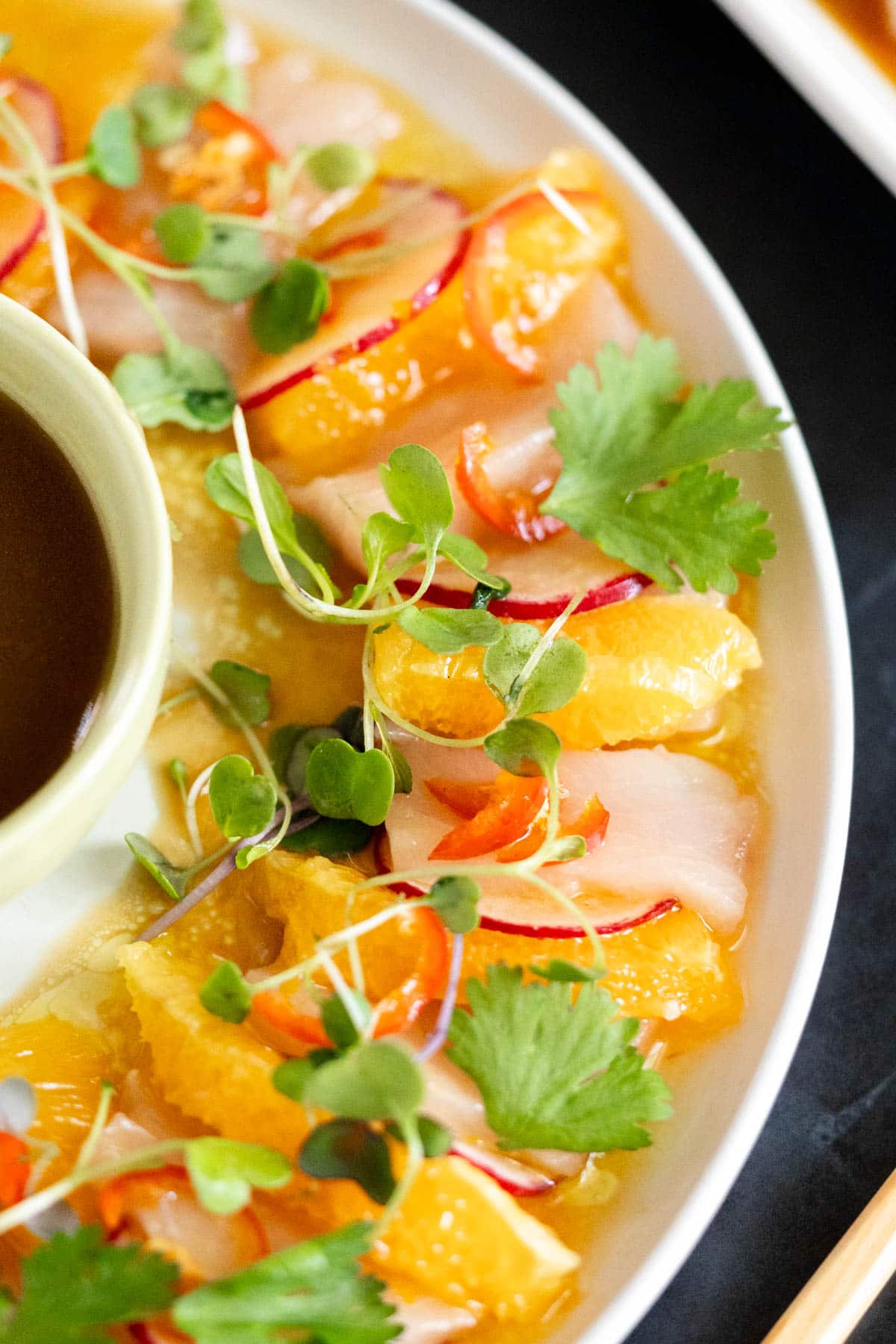
🌡️Storing Leftovers
Fully assembled hamachi crudo is best served immediately.
You can prep the toppings and the dressing in advance. The sliced radishes and peppers can be sliced and stored in an airtight container in the fridge for 1-2 days before serving.
The dressing can be mixed up and stored in an airtight container in the fridge for 3-4 days.
Food Safety
When consuming raw fish, it's essential to follow proper food safety guidelines. Here are a few tips for this hamachi crudo recipe:
- Get sushi-grade fish from a quality grocery store or market.
- Eat within a day of purchasing.
- The fish should not smell, it should smell clean and be firm in texture.
- Do not let raw fish sit out for more than 20 minutes.
- Wash your cutting board and knife well after slicing the fish. I recommend using a plastic cutting board rather than a wooden one so that it's easier to sanitize.
More Seafood Recipes
Frequently Asked Questions
No hamachi is not a type of tuna. Hamachi is a type of yellowtail fish that is farm raised. There is a yellowfin tuna but they are not related.
Yes! As long as you're using raw sushi-grade fish and following proper food safety guidelines, it is safe for raw consumption.
Did You Enjoy Making This Recipe? Please rate this recipe with ⭐⭐⭐⭐⭐ or leave a comment. It helps other wonderful people connect with my food.
📖 Recipe Card

Hamachi Crudo with Soy and Citrus
Ingredients
- 4 ounces sushi-grade Hamachi yellowtail
- 2 radishes very thinly sliced
- ¼ cup microgreens
- 6-8 cilantro leaves
- 2 tangerines one segmented and one zested and juiced
- 2 Tablespoons tamari gluten free soy sauce or regular soy sauce
- 1 Tablespoon mirin
- 1 Tablespoon extra-virgin olive oil
- 2 teaspoons sesame oil
- 1 Thai chili thinly sliced
Instructions
- Place the fish in the freezer for 5 to 10 minutes to make it easier to slice. Using a sharp knife, slice the Hamachi into thin pieces.4 ounces sushi-grade Hamachi
- In a small bowl, combine the tangerine zest, tangerine juice, tamari (or soy sauce), mirin, olive oil, and sesame oil. Mix well.2 tangerines, 2 Tablespoons tamari gluten free soy sauce, 1 Tablespoon mirin, 1 Tablespoon extra-virgin olive oil, 2 teaspoons sesame oil, 1 Thai chili
- Arrange the slices of hamachi, radishes, and orange segments on a plate. Drizzle the crudo sauce on top.2 radishes, ¼ cup microgreens, 6-8 cilantro leaves, 2 tangerines
- Scatter the microgreens and cilantro leaves on top. Serve immediately.
Notes
- If you can't find tangerines use fresh mandarin oranges or other smaller orange.
- Alternatively, you can drizzle on half the sauce and serve the remaining on the side for dipping.








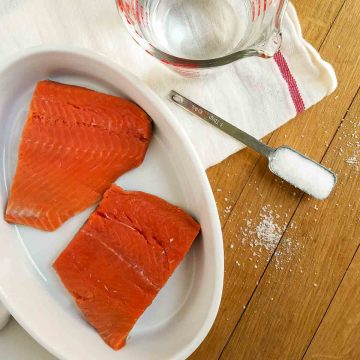

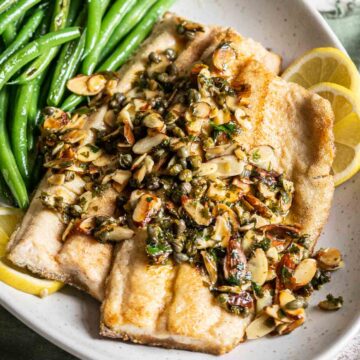
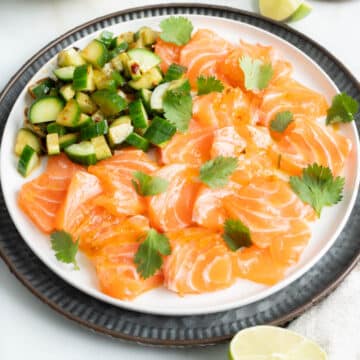

Comments
No Comments